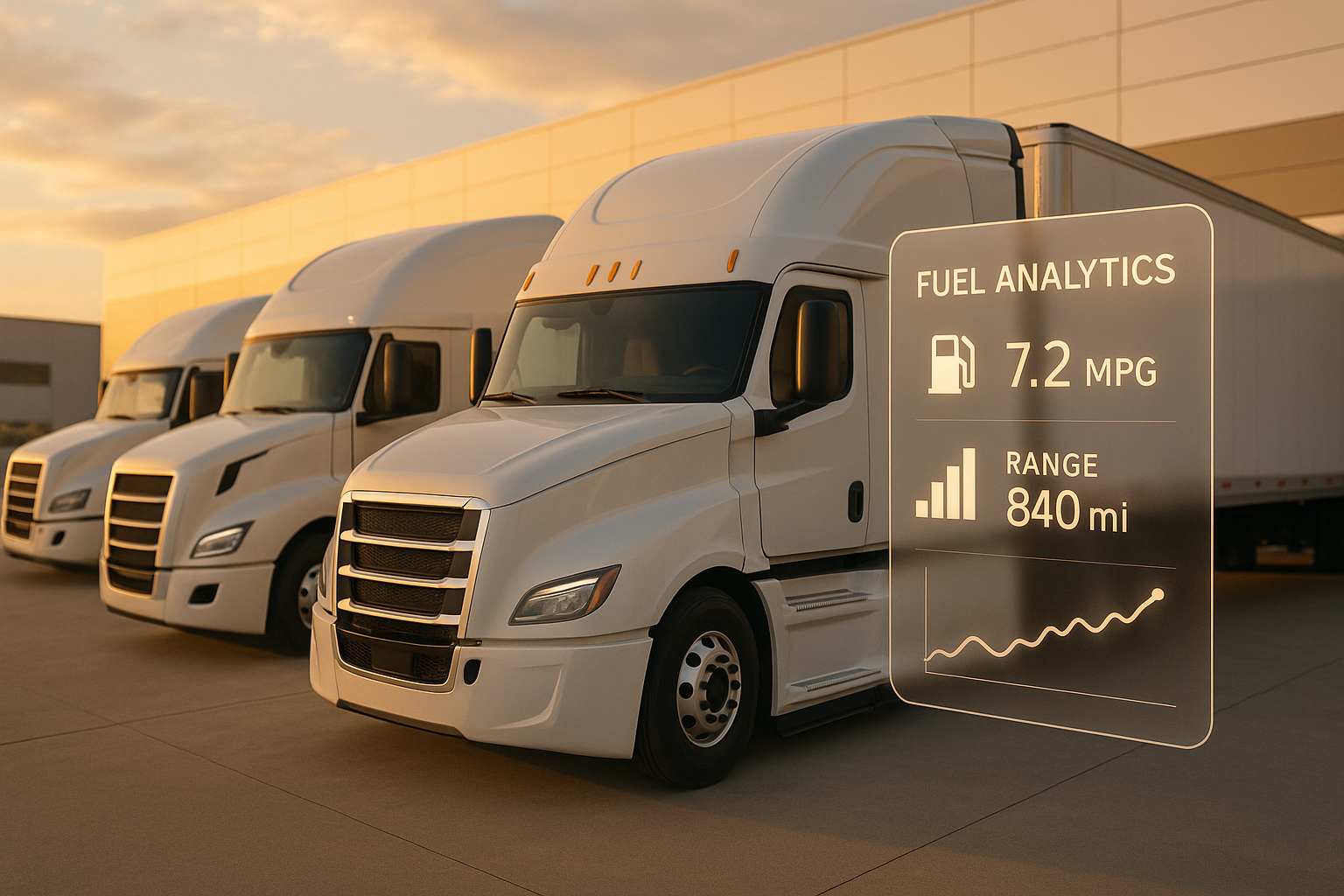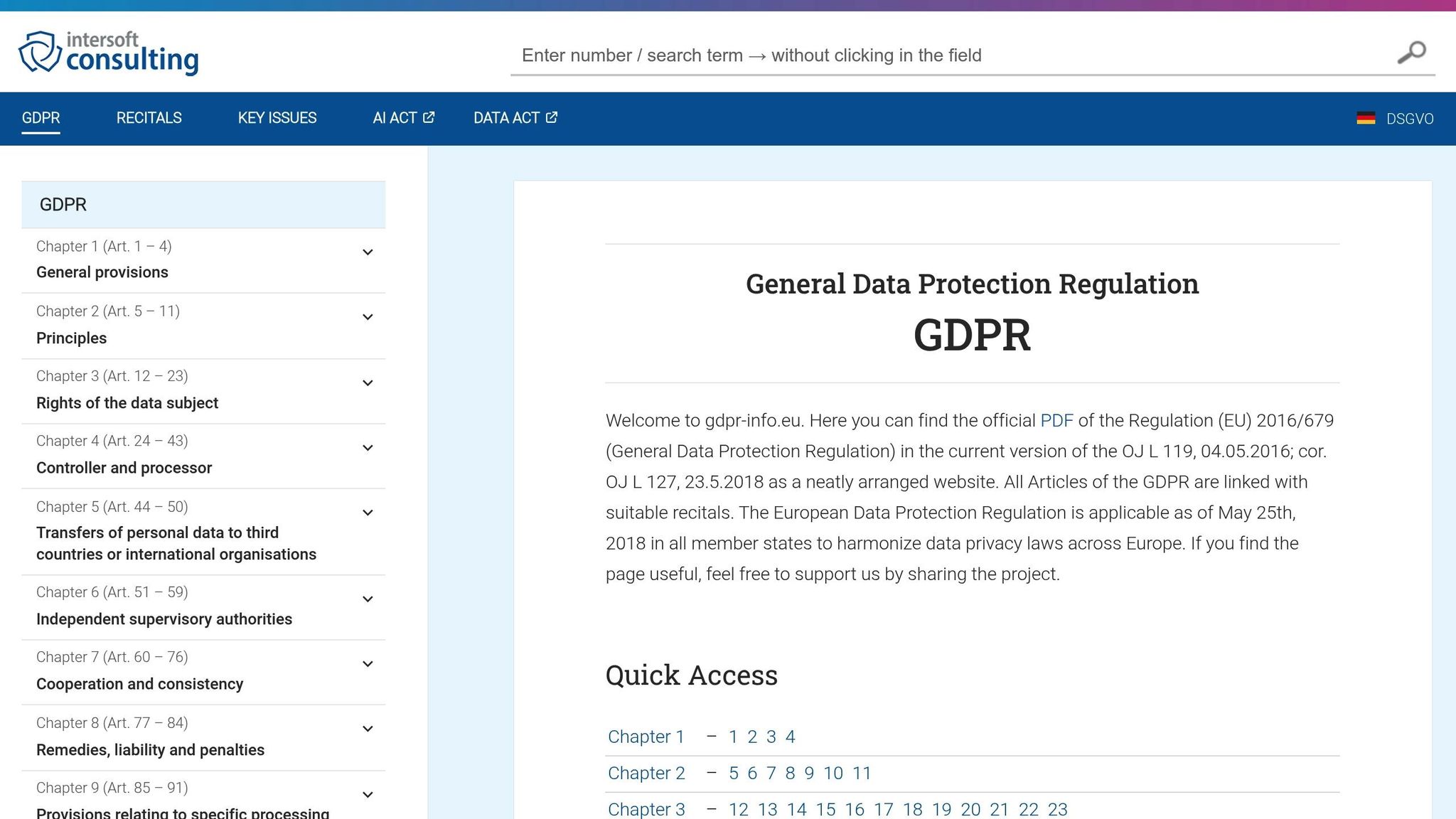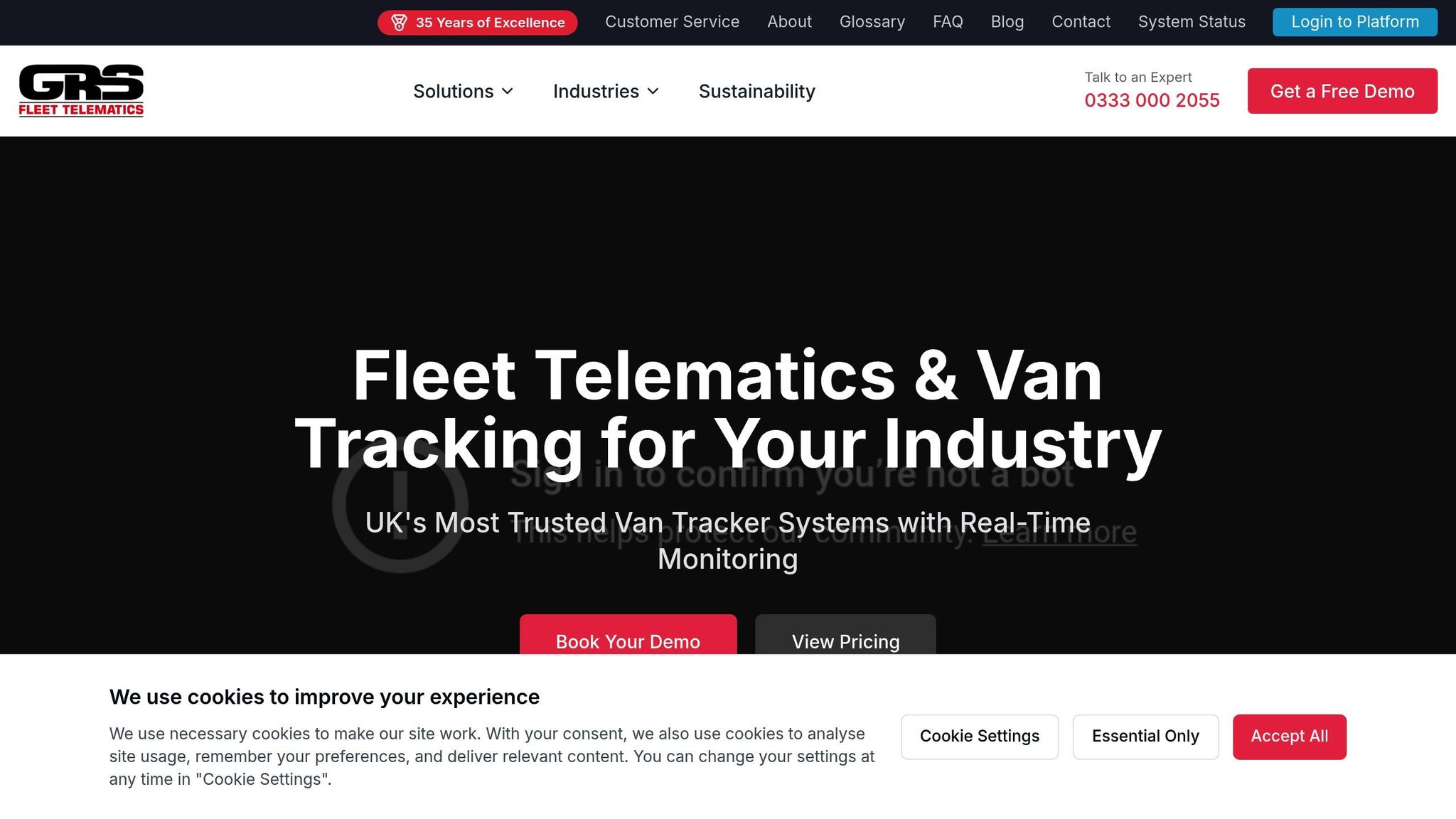Predictive Fuel Analytics for Fleets
Michael Bar

Predictive fuel analytics helps fleet operators save money and improve efficiency by forecasting fuel consumption using data like driver behaviour, vehicle performance, and route patterns. This approach reduces costs, improves safety, and ensures compliance with UK regulations. Here's how it works:
- Cost Savings: Identifies wasteful practices (e.g., aggressive driving, poor route planning) and suggests improvements, cutting fuel expenses by up to 24%.
- Maintenance Benefits: Monitors vehicle health to prevent breakdowns and unnecessary repairs, reducing downtime.
- Regulatory Compliance: Generates emissions reports to meet UK standards (e.g., Clean Air Zones) and supports sustainability goals.
- Tools Needed: Telematics devices, fuel cards, and maintenance records provide the data needed for accurate predictions.
The Power of Predictive Analytics | DON WOODS | Automotive Digest
Key Benefits for UK Fleet Operators
Predictive fuel analytics offers UK fleet operators a game-changing way to tackle operational challenges, reducing costs and improving overall efficiency.
Cutting Fuel Costs and Boosting Efficiency
Fuel costs represent a major chunk of operating expenses for UK fleet operators, and with prices constantly rising, managing these costs is critical. Predictive fuel analytics steps in by identifying inefficiencies like aggressive acceleration, harsh braking, or poorly planned routes. By analysing driver behaviour, vehicle performance, and route data, it highlights wasteful practices and provides actionable insights for improvement. For example, targeted driver training based on these insights can lead to immediate savings.
The system also uses historical traffic patterns, delivery schedules, and fuel data to recommend optimal routes, cutting down unnecessary mileage. Plus, it identifies the best times and locations for refuelling, helping operators avoid expensive last-minute top-ups. Another advantage? It can optimise vehicle loading patterns, ensuring weight distribution and loading sequences are as fuel-efficient as possible. This is especially beneficial for urban delivery fleets navigating congested city streets.
Improved Maintenance and Reduced Downtime
Predictive fuel analytics isn’t just about fuel; it’s a powerful ally in vehicle maintenance. By monitoring fuel and engine performance data, it can detect early warning signs of issues - like increased fuel consumption caused by clogged air filters, faulty injectors, or incorrect tyre pressure. Addressing these problems early means avoiding costly breakdowns.
Instead of sticking to rigid maintenance schedules, the system recommends servicing based on the actual condition of each vehicle and its upcoming workload. This tailored approach minimises unplanned downtime, keeping fleets running smoothly and reducing disruptions.
Staying Compliant and Supporting Environmental Goals
With strict environmental regulations like Clean Air Zones in cities such as London and Birmingham, compliance is a top priority for UK fleet operators. Predictive fuel analytics helps by generating detailed emissions reports. These insights not only ensure compliance but also reduce time spent in restricted areas, helping fleets avoid penalty charges.
The system also supports sustainability efforts by providing accurate carbon footprint reports, which can aid in achieving ISO 14001 certification. Additionally, it identifies vehicles that are best suited for electrification, ensuring fleet upgrades align with operational needs and take advantage of government incentives like the Plug-in Van Grant. Together, these tools make it easier for fleets to modernise while meeting environmental goals.
Steps to Implement Predictive Fuel Analytics
Predictive fuel analytics offers UK fleets a way to improve cost efficiency and maintenance. But getting this system up and running requires a planned approach. UK fleet operators should focus on three main areas: setting up the right tools and data sources, managing the integration process, and ensuring compliance with data protection laws.
Required Tools and Data Sources
The backbone of predictive fuel analytics is telematics. These small devices, installed in vehicles, gather real-time data on factors like location, speed, engine performance, and fuel consumption. Modern telematics systems collect frequent and detailed data, which is essential for accurate predictions.
Fuel cards are another key tool. They track where and when vehicles are refuelled, the amount of fuel purchased, and the cost per litre. When this data is cross-referenced with telematics, it can highlight patterns and detect irregularities.
Vehicle maintenance records also play a vital role. Digital logs provide information on service history, parts replacements, and repair costs. For instance, an unexpected increase in fuel consumption could point to issues like a clogged air filter that needs replacing.
Driver behaviour data is equally critical. Metrics such as acceleration, braking, idling, and speed variations help pinpoint driving habits that waste fuel.
Lastly, external data sources like traffic conditions, weather, and road gradients enhance prediction accuracy. By combining these elements, fleet operators can create a comprehensive dataset to move forward with integration.
Integration and Deployment Process
Implementing predictive fuel analytics typically happens in stages. Start with a pilot phase to test data collection and establish a baseline.
Once the initial data is validated, models are trained using historical data. These predictive algorithms analyse patterns in driver behaviour, vehicle performance, routes, and fuel consumption. Over time, the system becomes better at identifying trends and delivering reliable insights.
Calibration is crucial to adapt the system to specific fleet needs. For example, fleets operating in busy cities will have different fuel usage patterns compared to those in rural areas. Adjustments account for variables like traffic, stop-start driving, and terrain.
Training is another important step. Fleet managers and drivers need to learn how to interpret system recommendations. This includes navigating dashboards, understanding alerts, and applying suggested changes to improve fuel efficiency.
Performance monitoring is an ongoing process. Fleet operators should track the accuracy of predictions and fine-tune models as needed. As more data is collected, the system becomes more effective, aligning with the benefits outlined earlier.
Data Security and GDPR Compliance

Throughout the integration process, data security and compliance with GDPR regulations must remain a priority. UK fleet operators need to establish a legal basis for processing data and ensure drivers are informed about how their information will be used.
To address privacy concerns, collect only the data necessary for fuel analytics. Configuring telematics systems to focus on fuel-related information not only simplifies compliance but also limits unnecessary data collection.
Role-based access controls are essential for managing sensitive information. These controls allow fleet managers to view aggregated data while restricting access to individual driver details.
Data retention policies should also be in place. Although GDPR doesn’t specify exact timeframes, operators must justify how long they keep data. Typically, detailed records are kept for a set period before being converted into aggregated statistics.
Encryption is a must-have for protecting data, both during transmission and when stored. Modern telematics systems often rely on strong encryption protocols to ensure intercepted data cannot be accessed without the correct keys.
Regular audits are another layer of protection. Periodically reviewing data handling practices - such as access logs and security measures - helps ensure ongoing compliance and prevents potential issues.
Finally, transparency with drivers is crucial. Even if there’s a legal basis for collecting data, it’s good practice to explain clearly what’s being collected, how it’s used, and the benefits it provides. This openness builds trust and encourages driver participation in improving fuel efficiency.
GRS Fleet Telematics Solutions for Predictive Analytics

Building on earlier insights, GRS Fleet Telematics brings predictive analytics into one cohesive system aimed at improving fuel efficiency. By transforming vehicle data into practical fuel-saving strategies, the platform blends tracking technology with advanced analytics to cut costs and enhance overall operational performance.
Features Supporting Predictive Analytics
The system collects real-time data to deliver accurate insights into fuel consumption. Tracking devices monitor essential metrics like fuel usage, engine performance, speed, and route adherence. This data feeds into sophisticated analytical models that pinpoint areas for improvement.
Historical data analysis is another key component. By examining extensive journey records, the system uncovers patterns in fuel use and identifies routes that align with fuel-efficient driving habits. Additionally, eco-driving analytics evaluates behaviours such as acceleration, braking, idling, and speed consistency, offering actionable feedback for drivers.
Route optimisation takes efficiency a step further. The platform combines historical and live traffic data to map out the best possible routes. Geofencing capabilities allow operators to set virtual boundaries, sending alerts when vehicles stray into areas that could lead to unnecessary fuel consumption.
These features not only optimise fuel use but also enhance security and reduce costs.
Security and Cost Benefits
The platform employs dual-tracker technology to strengthen vehicle security and ensure uninterrupted data collection. A primary tracker gathers detailed data, while a Bluetooth backup device maintains monitoring in case the main tracker is compromised. With a 91% recovery rate for stolen vehicles, this system provides peace of mind for fleet operators.
Starting at £7.99 per month per vehicle, the subscription includes SIM data, platform access, and account support, making it an affordable option for fleets of all sizes. Around-the-clock data availability ensures that fleet managers can access predictive insights whenever needed, while role-based access controls offer secure, customised data views for team members.
Case Examples of Fuel Reduction
Real-world examples highlight the platform's ability to deliver measurable savings. Through historical data analysis, GRS Fleet Telematics has shown it can reduce fuel costs by up to 24% by analysing driving patterns and optimising routes. These savings stem from various improvements: avoiding congested routes, promoting fuel-efficient driving habits through detailed feedback, and scheduling maintenance to prevent fuel-wasting issues.
In busy urban settings, the combination of live traffic updates and historical data proves particularly effective. By identifying routes that consistently offer better fuel economy during specific times, the system helps drivers avoid stop-start conditions and extended idling. Over time, these refinements amplify fleet-wide efficiency gains.
Measuring ROI and Driving Continuous Improvement
After exploring strategies to reduce fuel consumption, it’s essential to measure their financial impact and refine them over time. The key lies in tracking important financial and operational metrics. Fleet operators who focus on the right data and continuously improve their systems can achieve lasting benefits.
Calculating ROI for Predictive Fuel Analytics
The formula for ROI is simple: ROI = (Total Financial Gains / Investment Cost) x 100. Financial gains come from reduced fuel consumption, lower maintenance costs, and increased productivity. These elements are directly tied to the improvements in fuel efficiency and operational performance we’ve already discussed.
- Fuel savings are the biggest factor, calculated by comparing fuel usage before and after implementing predictive analytics.
- Maintenance cost reductions come from predictive monitoring, which helps prevent expensive breakdowns and extends vehicle lifespans.
- Productivity gains are achieved through optimised scheduling, less idling, and better route adherence, leading to more deliveries and happier customers.
For instance, if a fleet spends £95.88 per vehicle annually on predictive analytics and saves £500 per vehicle, the ROI is an impressive 421%.
Key Metrics to Track
To measure ROI effectively, you need to monitor specific metrics that show how well the system is performing and its financial impact:
- Fuel Efficiency: Track fuel consumption per kilometre, cost per litre, and monthly fuel expenses per vehicle.
- Driver Performance: Monitor incidents like speeding, harsh braking, idling, and adherence to planned routes.
- Maintenance: Compare scheduled versus emergency repairs, average repair costs, vehicle downtime, and maintenance frequency.
- Operational Efficiency: Evaluate delivery completion rates, average journey times, vehicle utilisation, and customer satisfaction scores.
- Security and Theft Prevention: Measure incident response times, recovery rates, and alerts for unauthorised vehicle use.
Don’t forget insurance-related savings. Many insurers offer discounts for fleets using advanced telematics systems. Keep track of premium reductions or improvements in claims resulting from better safety monitoring and theft prevention.
Refining Models for Long-Term Success
To ensure sustained value, predictive analytics systems need regular updates and refinements. Here’s how to keep improving:
- Improve Data Quality: Regularly review data collection methods, validate sensor accuracy, and ensure all fleet vehicles are covered.
- Analyse Historical Patterns: Look at long-term trends, seasonal fluctuations, and route efficiency to identify areas for improvement. This helps optimise vehicle assignments and maintenance schedules.
- Incorporate Driver Feedback: Fleet operators can provide valuable real-world insights about routes, vehicle performance, and challenges. Regular discussions with drivers can enhance the accuracy of predictive models.
- Benchmark Against Industry Standards: Compare your performance metrics - fuel efficiency, maintenance costs, and productivity gains - with industry averages to stay competitive.
Keep your system up-to-date with regular software updates and new data integrations. Adjust for seasonal factors like weather, traffic changes, and fluctuating demand, as these can affect fuel consumption and efficiency. Quarterly reviews of the system can help refine algorithms and maintain peak performance.
Finally, build expertise within your team. Train fleet managers to interpret analytics, spot trends, and make informed decisions. This ongoing effort ensures that predictive tools continue to deliver measurable value over the long term.
Conclusion
Predictive fuel analytics is reshaping fleet management in the UK by slashing costs, improving operational efficiency, and aligning with environmental goals. By leveraging both historical and real-time data, as outlined earlier, it enables fleets to forecast fuel needs and streamline their operations effectively.
The financial impact is undeniable. Fleet operators can save on fuel, cut down on maintenance expenses, and boost overall productivity. These benefits deliver a solid return on investment, making predictive analytics an option for fleets of all sizes.
The foundation for this success lies in the tools and strategies discussed earlier. Modern telematics systems play a key role by gathering real-time insights into fuel consumption, engine performance, driver habits, and route efficiency - all while adhering to strict data protection laws.
For UK fleets, the advantages go beyond cost savings. Predictive fuel analytics supports compliance with tough environmental regulations and helps operators meet sustainability objectives. By optimising routes, cutting down on idling, and fine-tuning maintenance schedules, fleets can lower emissions and reduce their carbon footprint. This dual advantage of cost efficiency and environmental responsibility is becoming increasingly critical as regulations grow tighter.
To maintain and enhance these benefits, regular system updates and ongoing evaluation are essential. Fleet managers who consistently review performance metrics, integrate driver input, and refine their predictive models achieve the best results. Continuous staff training and system reviews ensure that predictive analytics remains a valuable tool as fleet operations evolve.
In a competitive and demanding market, predictive fuel analytics offers UK operators a clear edge. By adopting this technology, fleets can cut operating costs, deliver better services, and build more sustainable businesses, ensuring they stay ahead in a rapidly changing landscape.
FAQs
How can predictive fuel analytics help UK fleet operators comply with regulations and meet environmental targets?
Predictive fuel analytics offers UK fleet operators a powerful way to track and forecast fuel consumption and emissions in real time. This helps businesses stay on top of strict UK emissions regulations. By pinpointing inefficiencies and improving fuel use, fleets can lower their carbon footprint and work towards sustainability targets.
In addition to supporting government policies, like the planned ban on new petrol and diesel vehicle sales, this technology enhances operational efficiency and trims costs. With proactive fuel management, fleet operators can meet regulatory requirements while also taking meaningful steps towards environmental responsibility.
What tools and data are needed to successfully implement predictive fuel analytics for fleets?
To make predictive fuel analytics work well, you’ll need to rely on a mix of essential tools and trustworthy data sources. These typically include vehicle telematics systems, GPS trackers, IoT sensors, fuel card transaction records, maintenance logs, and driver activity data. When combined, these sources offer both real-time updates and historical trends.
Feeding this data into an analytics platform allows fleet operators to identify patterns, predict fuel consumption, and fine-tune routes and driving habits. The result? Better efficiency, lower fuel expenses, and improved overall fleet performance.
How can fleet operators calculate ROI from predictive fuel analytics, and what key performance indicators (KPIs) should they monitor?
Fleet operators can measure the return on investment (ROI) from predictive fuel analytics by zeroing in on specific key performance indicators (KPIs) that highlight cost savings and improved efficiency. Some important ones to track are reduced fuel consumption, decreased idle times, and lower maintenance costs - all of which play a role in enhancing overall operations.
Other valuable metrics include fuel efficiency trends, improvements in driver behaviour, and fleet utilisation rates. By carefully analysing these areas, operators can gain a clear picture of the advantages predictive analytics bring and calculate the financial gains from their investment.